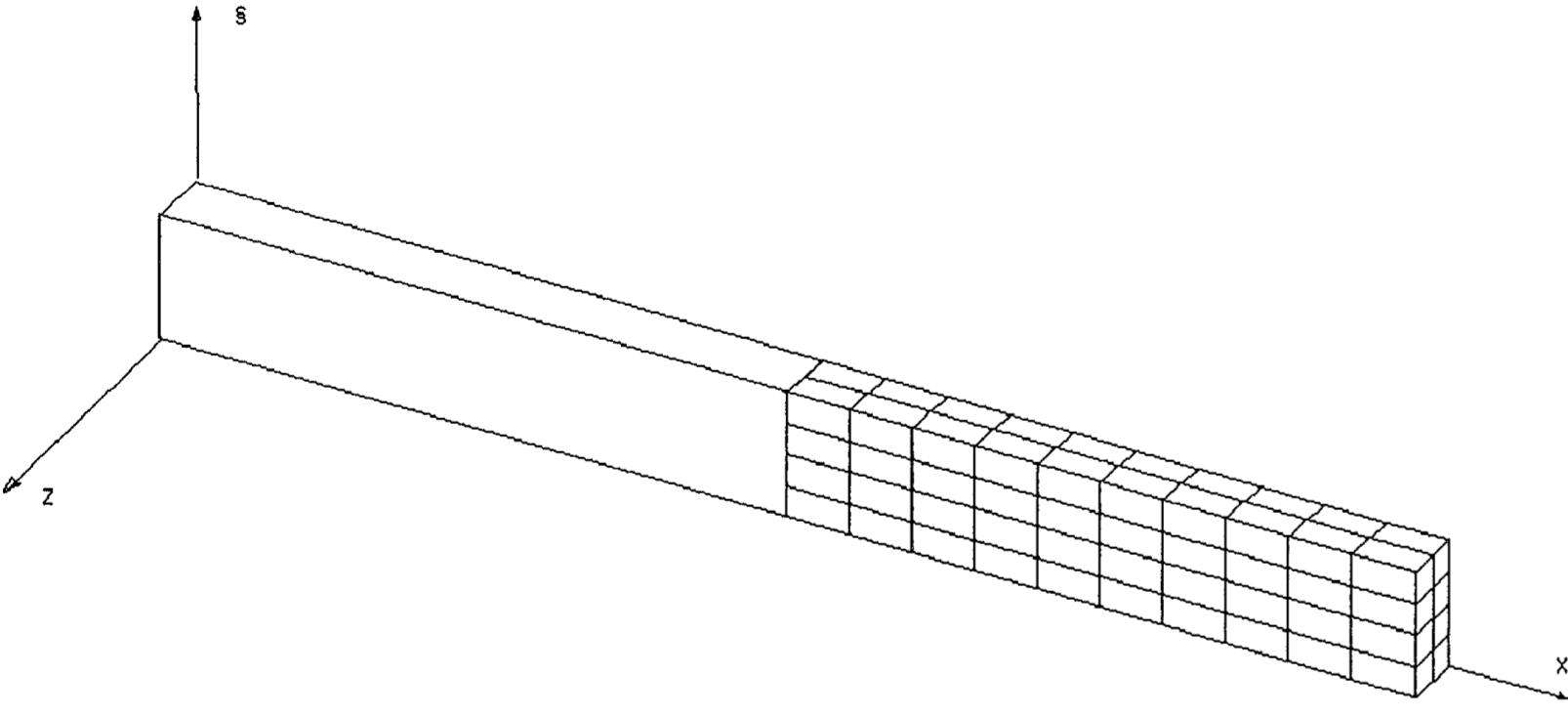3. Modeling A#
3.1. Characteristics of modeling A#

Figure 3.1 Meshing the geometry of the problem.
The beam is divided into two equal parts. Each half is represented by a substructure. These are generated using the Mac-Neal method.
3.2. Characteristics of the mesh#
Number of knots: 557
Number of meshes and types: 80 HEXA20, 20 QUAD8
3.3. Tested sizes and results#
Location |
Quantity Type |
Reference Value |
Reference Type |
Tolerance (%) |
|
\(X=\frac{L}{4}\) (first half) |
\(\mathit{DY}\) |
|
“ANALYTIQUE” |
\(5.0\) |
|
\(X=\frac{L}{2}\) (first half) |
\(\mathit{DY}\) |
|
“ANALYTIQUE” |
\(5.0\) |
|
\(X=\frac{L}{2}\) (second half) |
\(\mathit{DY}\) |
|
“ANALYTIQUE” |
\(5.0\) |
|
\(X=3\frac{L}{4}\) (second half) |
\(\mathit{DY}\) |
|
“ANALYTIQUE” |
\(5.0\) |